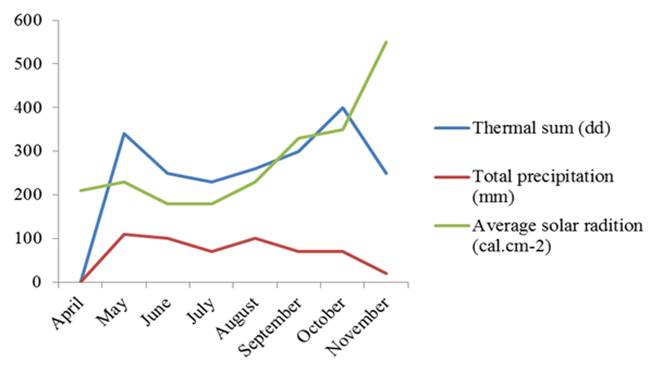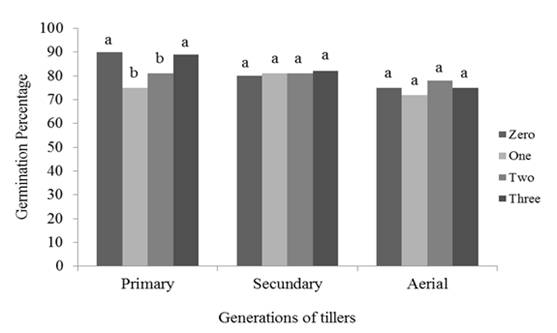ABSTRACT:
This study determined the effect of different defoliation frequencies in a long-cycle ryegrass cultivar on yield components and the physiological and sanitary quality of seeds. Four defoliation frequencies were applied (without, one, two, and three defoliations). The time between defoliations was 350 degree-days. At the first, second, and third defoliation time, the plants were 15 cm, 20 cm, and 35 cm, respectively, and were lowered to half their height. The yield components and plant structure were evaluated through the tillers, along with the physiological quality of the seeds, which was verified by germination tests, first germination count, accelerated aging, tetrazolium test, field emergence, and weight of a thousand seeds. For the sanitary quality analysis, the percentage (%) of fungi incidence in the seeds was verified. The second defoliation determined the seeds’ high physiological and sanitary quality due to the higher amount of primary and secondary tillers produced concerning the other treatments. However, there was no significant difference for the third defoliation since the aerial tillers issued the same quality of seeds originated from primary and secondary tillers. The average incidence of fungi such as Colletotrichum sp., Fusarium sp., Phoma sp., and Dreshslera spp. was lower in ryegrass plants subjected to three defoliations.
Key words:
germination; fungi; Lolium multiflorum; aerial tillers

 Thumbnail
Thumbnail
 Thumbnail
Thumbnail
 Thumbnail
Thumbnail


